In the modern world, every populated urban city has electricity and therefore artificial light, which is turned on at sunset. Artificial light offers mankind the opportunity to extend their waking hours and utilise them productively. One must therefore ensure that this intervention of lighting a space is well designed and comfortable for the end users, or the inhabitants of the city. Lighting for cities should ideally be designed by educated light planners who understand the effects of light on human physiology as well as the constantly evolving lighting technologies. Human beings are phototropic beings and their circadian rhythms are governed by light.
Light influences human behaviour. The people from the Earth’s temperate zones are exposed to the severity of its effects in greater intensity and are therefore more sensitive to light. Though the conversations in these regions revolve largely around weather, the underlying cause of such anxiety is the lack of natural light, which influences human physiology, disturbs the circadian rhythms and sleep cycles, creating mood swings, feelings of physical unease, which can sometimes lead to depression. These are all manifestations of the human response to light or the lack of it. The spectral qualities of visible light have different properties, representative of its physical presence at different wavelengths, stretching from ultraviolet to infra-red. The green part of the spectrum is soothing whereas the red part induces a rush of adrenalin and the blue part keeps you awake. Warm tones of light induce a cosy feeling whereas the cool tones create a perception of brightness.
The understanding and information of the various qualities of light provide a palette to be utilised to achieve the desired ambience and to cater to the intended functions of the spaces being designed.
The warm tones, with their identity leaning towards fire, are also reminiscent of a particular period and are apt for historical environments, whereas the cooler light tones can be identified with technology and artificial light and therefore convey a more contemporary period. Lighting therefore has to be a designed and an informed intervention into any space, especially a public urban space as it caters to a multitude of people on a daily basis and thoughtful lighting can only make the experience for the users more comfortable and meaningful.
Every space has a functional need for light. It is important that the same be aesthetically and functionally articulated. Today, design fundamentals are struggling to match the fast-paced commercial environments that lay a single-minded focus on pecuniary gains. Light is a force that has the ability to create very positive influences when utilised and directed well. It also has the ability to cause harm. Over-lit commercial spaces, light trespass and pollution and misdirected light are some of the parameters that need to be understood and, if possible, minimised. Today, light is used in media and advertising and these media are sometimes plastered all over the urban space, completely altering the character of the city. Some media are static. However, technology today allows screening of motion as well as sound in these media and if not articulated with due thought into the urban environment they can be disturbing and obtrusive. This incidence of moving light can be a distraction and a hazard for traffic and pedestrian safety.
Street lighting is designed to facilitate detection of motion by the sensors in the human eye, which are active under low levels of illuminance. They detect peripheral vision and movement, which facilitate safety whilst driving. This does not require luminaires with high spectral qualities to achieve the functional requirements. However, the same streetlight when used in an urban context contributes the dual purpose of illuminating streets and defining the night-time character of the city. Therefore, the quality of the light gains importance as it has to render the cityscape in a pleasing manner.
Illumination in public spaces should be such that it creates a feeling of safety amongst its inhabitants. The illumination should be enough to recognise faces as well as identify colour and texture whilst taking into account other parameters of comfort such as glare, intrusion and light pollution.
Light pollution is a result of misdirected light contributing to a major loss in power and must be avoided. Well-designed lighting in conducive environments enhances the experience of the space. Lighting can be used to define the space; it is the fourth dimension of architecture and has to be built into the design language to achieve multi-fold benefits of the experience in a space.
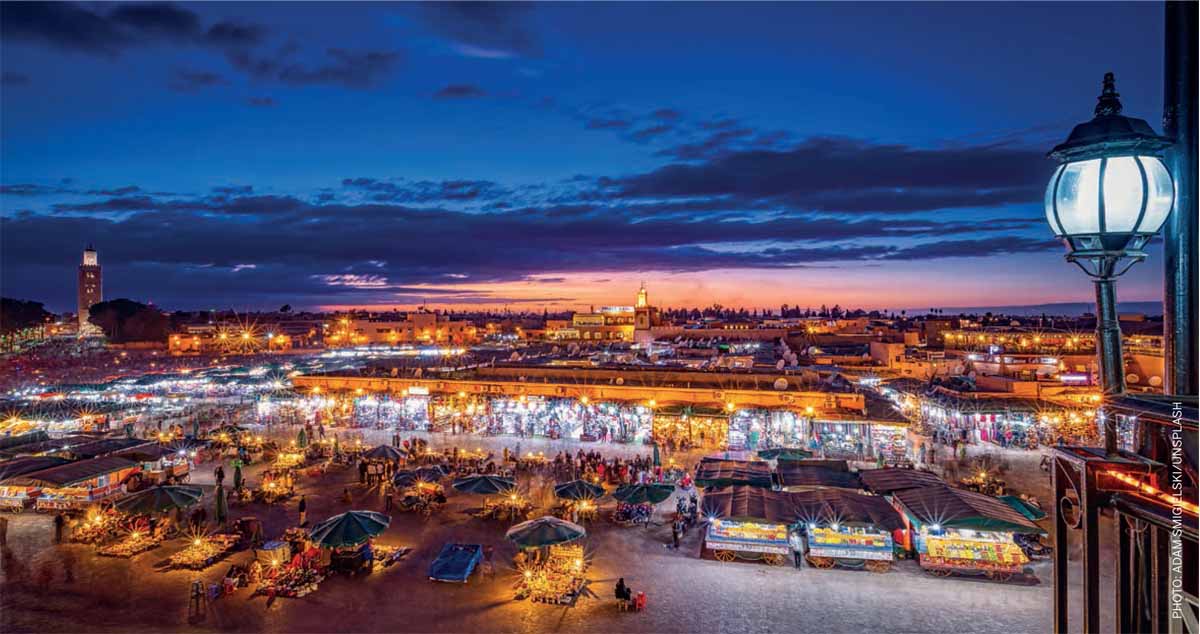
Light has been a central theme in some cities across the world. In Hong Kong, it has been the subject of a masterplan to activate the city at night. Incentives are provided to the buildings in Hong Kong that encourage them to allocate budgets and spend on architectural lighting. Each building lit at night is a part of the Hong Kong skyline. The lighting in some buildings is animated and forms part of a joint light show that occurs every evening at a fixed time. This approach has been exploited commercially to market the city as a tourist destination.
Singapore has a lighting masterplan, which is more subtle with a focus on functional lighting and uses light for classification of zones and defines the identity of each zone with the specific parameters of light. These broad guidelines keep the individual solutions cohesive and present a unified urban image. The CBD (Central Business District) of Singapore, with the Marina Bay Sands, Gardens By the Bay etc. have consciously invested in architectural lighting design and provide light art and light shows in the evening.
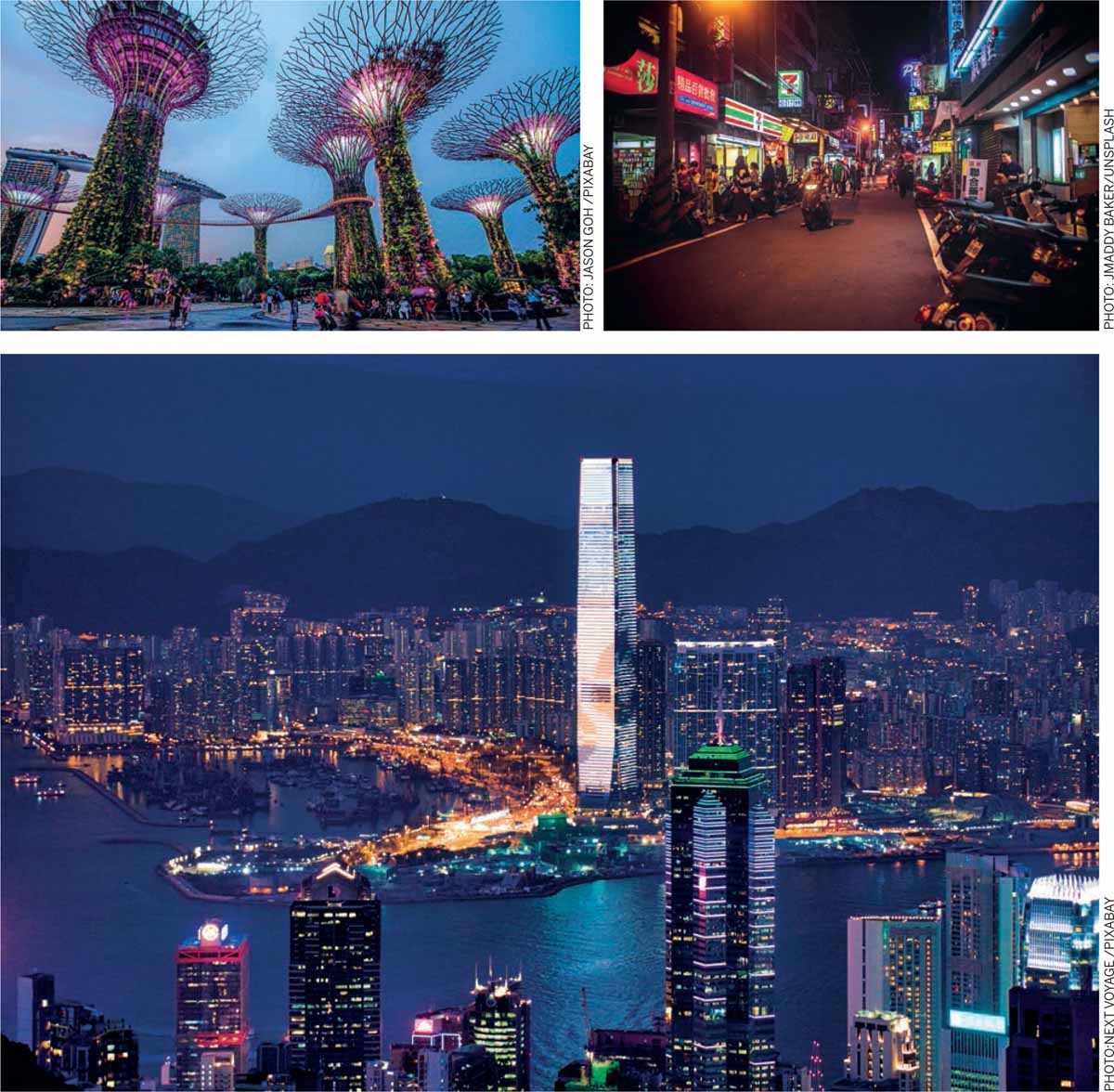
Top Right: Tamsui District, Taiwan
Bottom: Animated architecture, Hong Kong
Light can also be used to instil life into a stagnant or dying city. The classic case in point is the City of Alingsås in Sweden. Alingsås hosts and celebrates the 20th edition of Lights in Alingsås, a workshop on architectural lighting and installation, which has helped to rejuvenate the city through the medium of light. I experienced it first when I was invited to head a workshop there in 2009 and have been invited this year as well. The educational workshops with the participants culminate in six light installations in the city, which are thrown open for public viewing with a grand ceremony at the City Square and are on display for a month. This has helped sensitise people to good lighting practices as well as hugely bolstered the economics and demographic dynamics of the city, wherein the profile has changed from a city inhabited by a largely retired and ageing population to a vibrant and young city with new life. The city administration has to be lauded for its efforts and persistence and belief in the power of light.
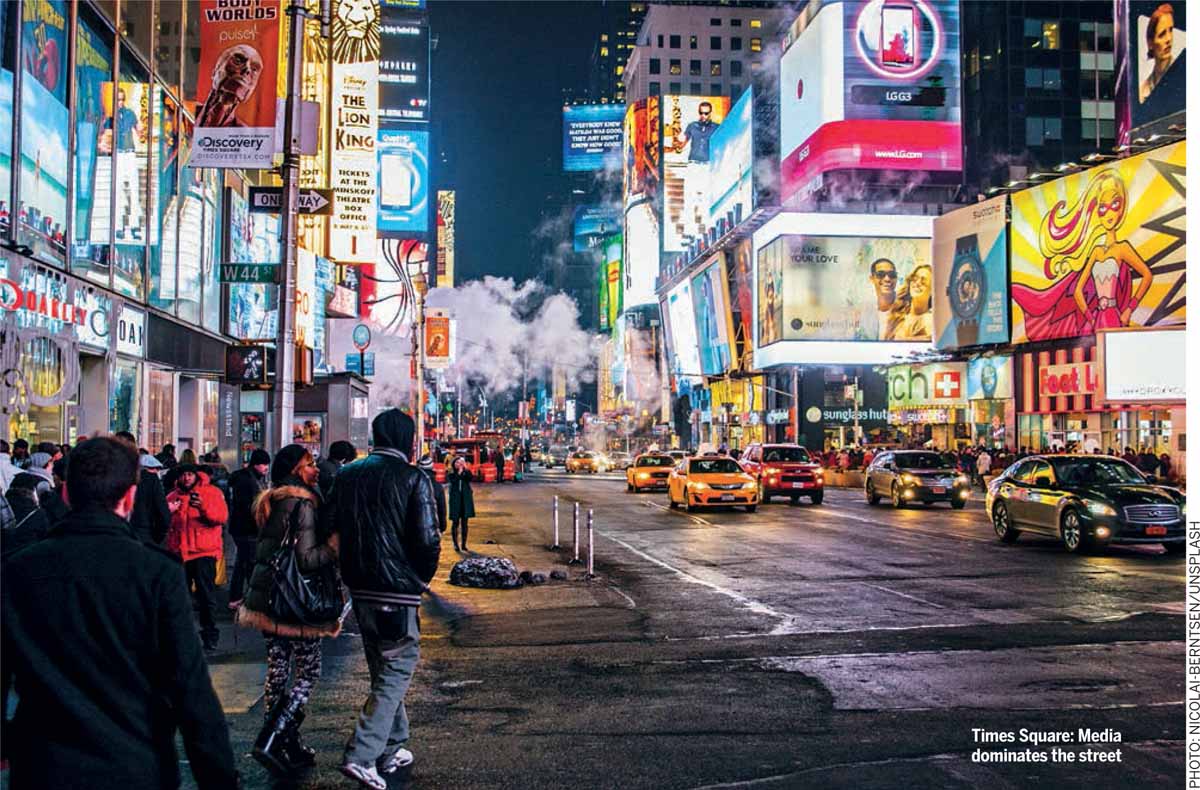
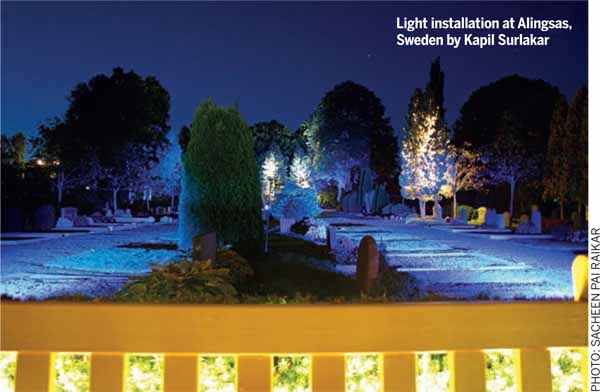
What are the dynamics that propelled this success? How does good lighting in cities contribute positively to growth and sustenance? Good lighting on its own cannot be the determinant. However, correct lighting can be the catalyst in providing a setting or a direction to activate the other factors that can collectively work towards achieving the desired goals. A well-lit urban environment is perceived as safe and thus encourages participation from inhabitants. Families, senior citizens, who have their own limitations and need enhanced lighting conditions to be at ease, as well as children who have to be constantly supervised, are encouraged by well-lit environments. This participation leads to a need for food, entertainment, clothing etc., which in turn encourages business and commerce. This brings investments and job opportunities to the area. It brings money into the system; people who earn also spend. It sets off a cycle of prosperity that is then up to the inhabitants and the administration to regulate and to exploit for the inherent benefits.
Light is life. Light is powerful. It’s an integral part of your daily routine without you being aware of it. Lack of light can have detrimental effects on the human body and psyche. It therefore becomes imperative to pay attention to how the cities are lit as it is one of the strong determinants of the overall well-being of its inhabitants.

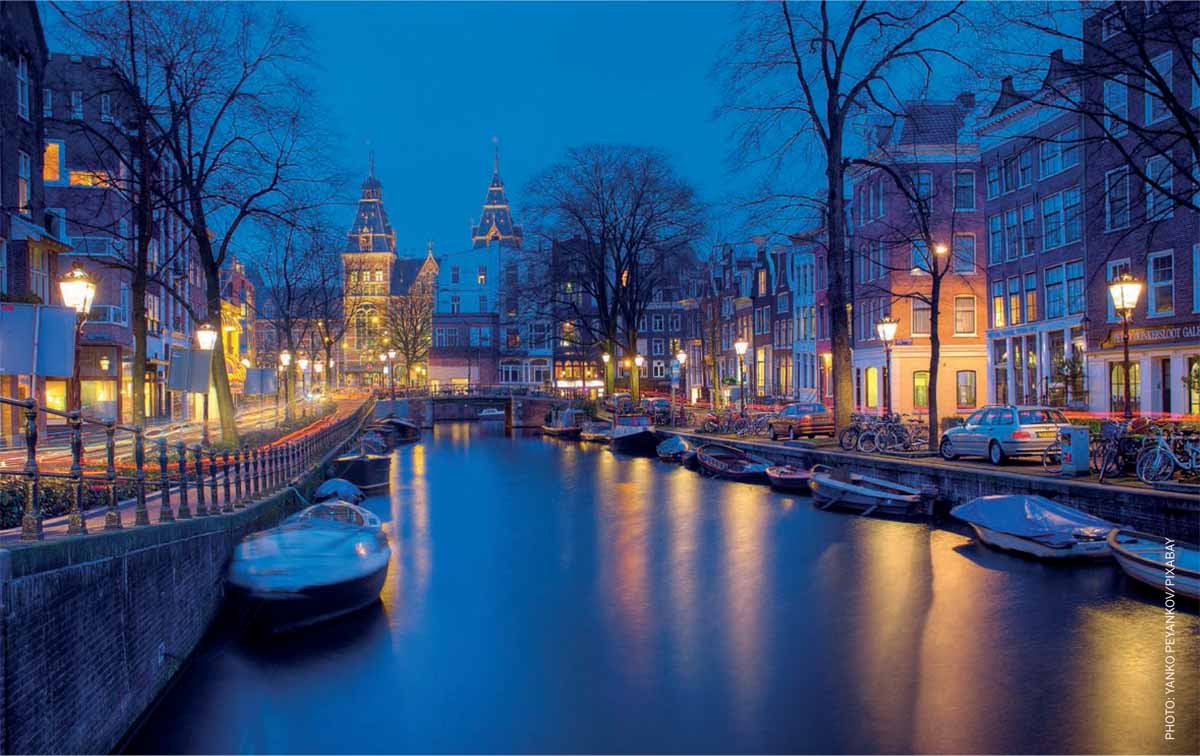

Comments (0)